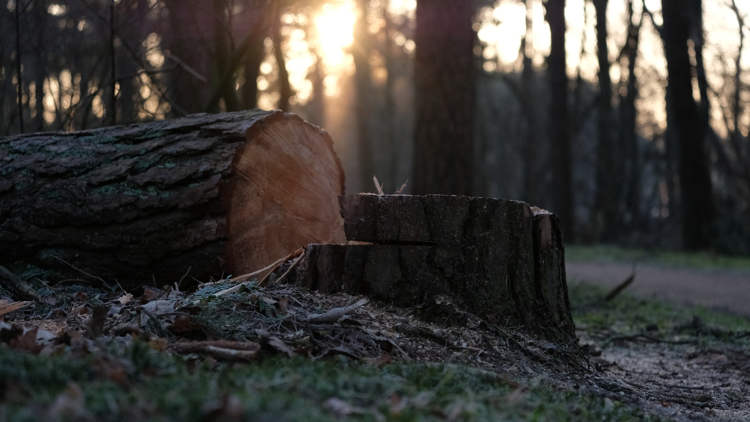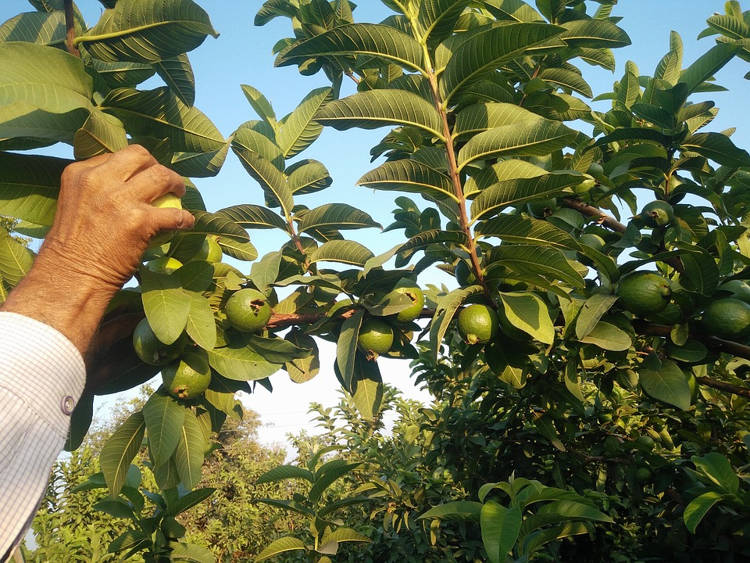Scientists Discover Tree That Thrives When Struck by Lightning

Lightning kills most of the trees it strikes, but scientists have discovered a tree species that not only survives lightning strikes but thrives as a direct result of them. For the longest time, there was a consensus in the scientific community that lightning could only have negative effects on trees. In the best case scenario, […]
Man Plants 40,000 Trees Over Two Decades to Create Sao Paolo Park

Helio da Silva, a retired business executive from Brazil, single-handedly planted over 41,000 trees in his hometown of Sao Paolo over the last two decades. Flying over the Brazilian metropolis of Sao Paolo, it’s tough to miss the 3.2-kilometers-long and 100-meter-wide green strip of trees wedged between two of the city’s busiest roads. It is […]
Tree Cut in Half in Neighborly Dispute Becomes Unlikely Tourist Attraction

A bizarre-looking fir tree sliced in half during a neighborly dispute over bird droppings has become a popular tourist attraction with its own Google reviews in the Waterthorpe suburb of Sheffield, England. Three years ago, the now-famous half-cut fir tree of Waterhope made international news headlines for the first time. Located on the edge of […]
Bloodwood – The Tree That Bleeds When Cut

Pterocarpus angolensis, commonly known as wild teak or bloodwood, is a species of tree native to Southern Africa known primarily for the dark red sap it secretes which looks like blood when the tree is cut. Well-known in tropical Africa, where it is used to make high-quality furniture and musical instruments, wild teak is resistant […]
Woman Goes Viral for Promoting Tree Hugging as a Form of Therapy

A Shanghai woman has become famous in her home country for promoting the physical and psychological benefits of hugging trees. Qishishiqi hugged her first tree back in April, while out on the tow with her husband. Feeling a little tipsy, the woman hugged a random tree on an empty street in Shanghai and immediately felt […]
The Gresham Lumberjack – Oregon’s Mysterious ‘Tree Serial Killer’

Authorities in Gresham, a suburb of Portland, Oregon, are trying to catch the infamous “Gresham Lumberjack”, a person who is suspected to have cut down around 700 trees in the area for no apparent reason. A special task force put together by Gresham Police and the Parks & Recreations has been scouring thousands of photos […]
Social Media Is Killing Thailand’s Loneliest Tree

Thailand’s “loneliest tree”, a solitary tree growing on a rocky islet only a few meters in diameter, is being seriously threatened by hoards of tourists desperate to get a selfie with it. The small patch of land located just off the country’s eastern coast, in Trat Province, has been dubbed ‘Koh Khai Hua Roh’ because […]
For Some Reason This Tree Species Leans Sideways When Planted Outside Its Natural Habitat

Araucaria columnaris, also known as the coral reef araucaria, Cook pine or New Caledonia pine, is a species of conifer native to New Caledonia that tends to tilt sideways when planted outside its natural habitat. First classified by Johann Reinhold Forster, a botanist accompanying Captain James Cook on his second voyage to circumnavigate the globe as far south […]
Japan’s Mesmerizing Tree Circles Are the Result of a 50-Year Experiment

A cedar forest in Japan’s Miyazaki Prefecture is home to a couple of unusual crop circle-like patterns that are clearly not random in nature. Photos of the bizarre patterns, which are visible only from above, made their way on the internet about three years ago and fueled all kinds of conspiracy theories that involved everything […]
Retired Couple Have Been Fighting the Desert for Almost Two Decades

A retired elderly couple has been fighting the desertification of their home in North China’s Inner Mongolia Autonomous Region for the last 19 years by planting hundreds of hectares of drought-resistant plants. Seventy-year-old Tububatu and his wife Taoshengchagan live in a village on the edge of Badain Jaran, China’s third-largest desert, and they’ve been spending […]
Giant Smiley Face on Oregon Hillside Is Made Up of Trees

People Driving along Oregon Route 18 in the autumn months or early December are treated to a unique view that is sure to brighten their day – a giant smiley face looking back at them from forest-covered hillside. Located at roughly mile 25 on Oregon Route 18, between Willamina and Grand Ronde, the now famous […]
Indian Man Turns Barren Land Into 10,000-Tree Orchard

An Indian man who started planting trees in a barren, sand-filled field 15 years ago is now being praised for transforming the wasteland into a 10,000-tree orchard. Satyendra Gautam Manjhi, a simple man from the small village of Imaliyachak, in the Indian state of Bihar, claims he was inspired to start planting trees after being […]
Daisugi – Ancient Forestry Technique Produces Plenty of Lumber From a Single Tree

Daisugi is a centuries-old forestry technique developed in Japan as a way of cultivating the highly-prized Kitayama Cedar without actually using any land. Today, the visually-striking technique can be witnessed in ornamental gardens. Dating back to the 14th century, daisugi allowed for the cultivation of Kitayama cedar, a species of tree known for growing exceptionally […]
The Heartbreaking Story of the World’s Loneliest Plant

The Royal Botanical Gardens at Kew, in the UK, are home to thousands of fascinating plants, but none as lonely as the Encephalartos woodii, an ancient cycad species and, most likely, the last one of its kind. It was in 1895 that botanist John Medley Wood noticed this interesting-looking palm tree on a steep slope […]
Drone Photographer Captures ‘Lenin’-Shaped Forest in Siberia

Vladimir Ilich Lenin, the founder and first leader of the Soviet Union, lives on in the hearts and minds of the Russian people, but also in one little-known geoglyph in the country’s Siberia region – pine tree forest that spells “Lenin” in Cyrillic letters. Russian photographer Slava Stepanov was planning a business trip to the […]
